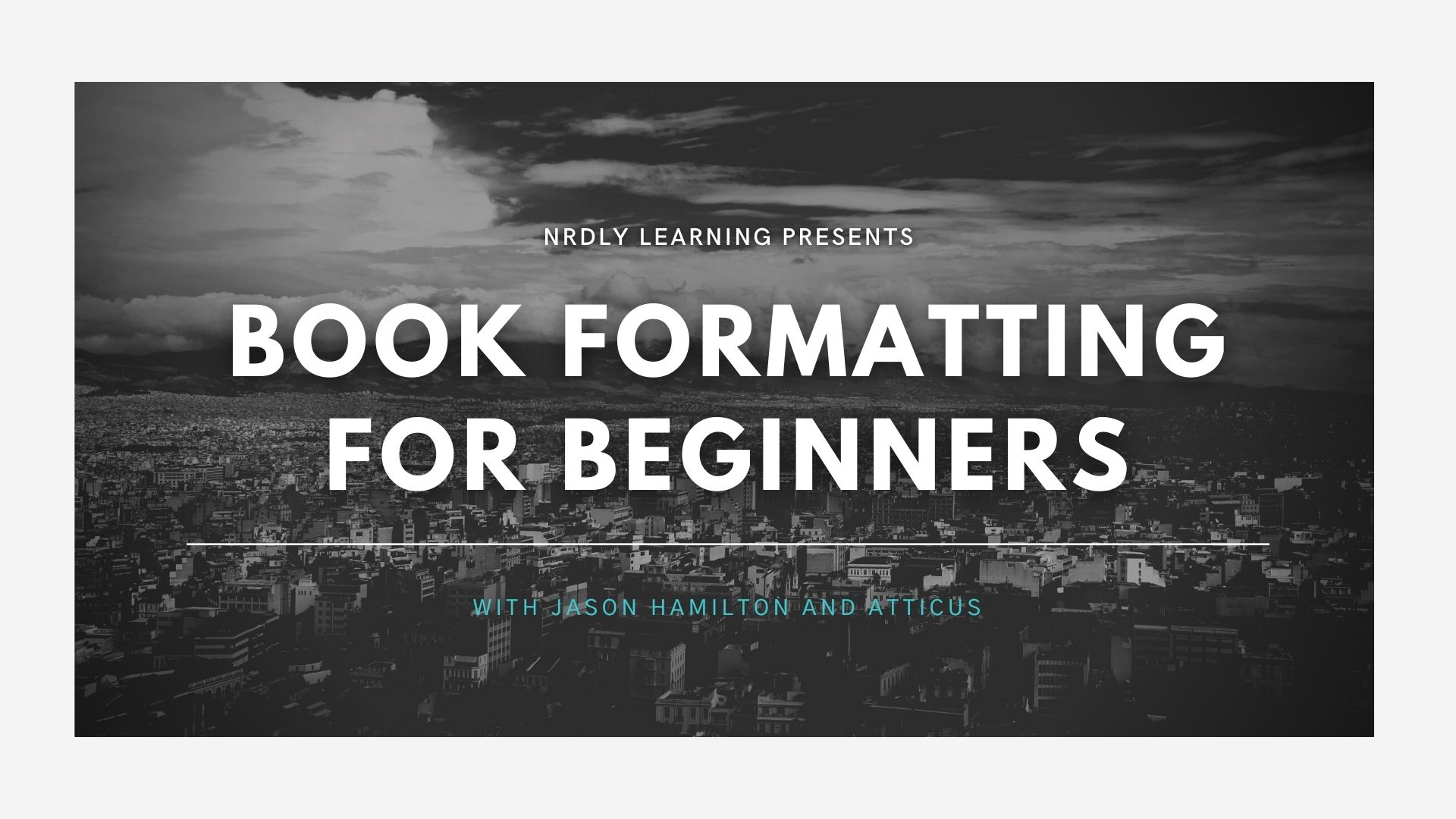By Jason Hamilton, Kindlepreneur.com
Book formatting is an important step in any self-publishing process. After all, if you do not have a well-formatted book, it will show, and it will pull readers out of the experience of reading your book.
But for a lot of authors, this process can be intimidating. So the question becomes: should you do it yourself, or should you hire a book formatter?
There are a number of pros and cons to each, but thankfully, technology has made book formatting easier and easier. So with the right tools, almost any author could learn to do it themselves.
But if you really don’t want to worry about formatting, we’ll tell you how to find a good formatter to do it for you.
Hiring a Book Formatter
For many authors, the money spent on a book formatter is worth the peace of mind that comes with it. And for authors of specific niches, such as magazines or children’s books, a book formatter can be even more necessary.
But let’s take a look at the pros and cons of hiring a book formatter.
Pros:
- Timesaver: a book formatter will save you time that you can instead spend on writing, marketing, or anything else that you want to do.
- A clean manuscript: a professionally formatted book is much more likely to be free of mistakes.
- A professional look: your book has a higher likelihood of appearing professional.
Cons:
- Pricing: a good formatter can cost anywhere from $30-$200, depending on the complexity of your book. A magazine or image heavy book, for example, is likely to cost you more.
- Time: while a book formatter can save you time, it can also extend the amount of time needed before your book is ready to publish.
- Control: when you hire someone else for a job, no matter what it is, you are relinquishing a bit of control over that thing.
How to Find a Book Formatter
Book formatters can usually be found on freelance job sites. These include:
- Fiverr
- Upwork
- Reedsy
- Word-2-Kindle
- Ebook Launch
- Damonza
It can be useful to hire two or three people to do the same job, which may cost more, but in the future you will have a much better sense of who is reliable, who gets the job done well, and has the most reasonable prices for their work. In other words, spending a little extra upfront to test several different formatters can save you more money or result in a better product in the future.
Doing It Yourself
The second option is to format the book yourself. While this can be intimidating, it’s actually not as hard as you think for most authors. This is especially true if you have the right software. But let’s take a look at some of the pros and cons of formatting a book yourself.
Pros:
- Low cost: the costs of formatting a book yourself are considerably lower than hiring out.
- Control: as the book formatter, you have complete control over your book and manuscript.
- Control of the timeline: if you have a specific deadline you are trying to meet with your book, you have control over how quickly you get your book formatted to meet those deadlines.
Cons:
- Skill level: if you aren’t familiar with book formatting, or with a specific software, there might be a learning curve.
- Time: formatting the book yourself means you can’t spend time doing something else.
- Quality: depending on your level of skill, formatting a book yourself can result in a lower-quality product, though this is something that can be improved upon.
Thankfully, there are a number of tools that make formatting easy, especially if you are writing a standard book and don’t have any special needs like you would when formatting a children’s book, a picture book, a magazine, etc.
Which Book Formatting Tool Should You Use?
There are a lot of different formatting software, and which one you pick will depend on your needs. Here are our top recommendations for most authors:
- Atticus: Atticus is the best all-in-one writing and formatting tool – we should know, because we designed it! It’s easy to use, formats a book in mere minutes, and is available on all platforms. For most authors, particularly those using Windows, this should be your number one go-to software for formatting.
- Adobe InDesign: if you were formatting a special type of book, such as children’s books or magazines, you may need a different, more advanced software. Adobe InDesign does everything you need here. It’s one drawback is that it is very difficult to learn and requires an advanced knowledge of formatting before you can properly use it.
- Vellum: before Atticus came along, Vellum was the big name in book formatting. Its biggest drawback is that it is not available for Windows, so you have to buy a Macintosh computer in order to run it. That said, it does format beautiful books, and has been a staple for many authors in the past.
- Scrivener and Microsoft Word: Scrivener and Word are two of the top writing tools used by authors. Their primary purpose is to be used as a writing tool, but they can also format books if you know what you’re doing. Unfortunately the learning curve for book formatting is high on both platforms, and they do not have anywhere near the ease-of-use of a program like Atticus or Vellum.
- Kindle Create: if you are tight on your budget and need a viable option, Kindle Create should be your go-to. While not as advanced and requiring a bit more learning than Atticus or Vellum, Kindle Create will get the job done for no money at all. Keep in mind that it was developed by Amazon, and so it is primarily geared for creating books that are formatted for Amazon.
You can learn more about how to format a book over at Kindlepreneur.com – right here.
Check out Atticus in Action:
Which Is Right for You?
Ultimately, it’s up to you to decide whether you should hire out a book formatter or do-it-yourself.
Personally, we recommend that you do it yourself unless you have extenuating circumstances. For most authors, using a program like Atticus will result in beautifully formatted books that take almost no time at all to create, and have a minimal learning curve to master.
However, if you have a little more cash and want to save yourself the time and effort, hiring out can still be a good option.
Jason Hamilton is the Content Manager for Kindlepreneur, a sister company of Atticus, and a positive psychology fantasy author. He loves mythology, history, and geek culture. When he’s not writing, his favorite hobbies include hiking, chilling with his wife, spouting nonsense words at his baby daughter, and developing his websites MythBank and Mythical Self.
Want to learn more about how optimizing your books with the right formatting, cover design, descriptions, and metadata can dramatically increase your sales (for free)? Join bestselling authors Nick Stephenson & Bryan Cohen for a live workshop on Wednesday March 2nd – register your seat right here and they’ll send you the replay if you can’t make it live.

